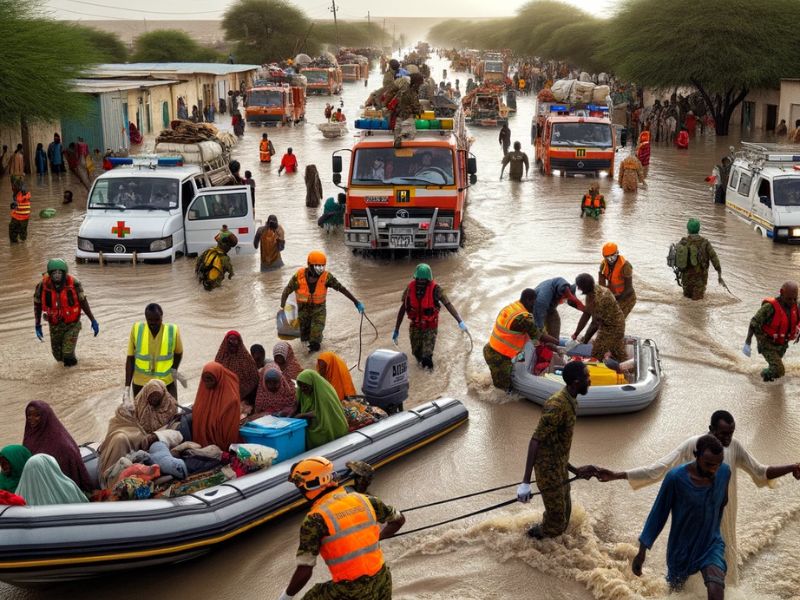
Flooding Emergency in the Horn of Africa: Growing Humanitarian Crisis
El Niño Exacerbates the Situation in an Already Vulnerable Region
The Devastating Impact of Flooding
The Horn of Africa is facing one of its worst humanitarian crises due to devastating floods following a severe drought. This emergency is putting a severe strain on relief efforts, with over two million people displaced and hundreds of lives lost. Recent floods, caused by the El Niño phenomenon, have hit Somalia, Ethiopia, and Kenya hard. The region, which was already grappling with the worst drought in forty years, is now dealing with floods that have forced over 700,000 people to flee in Somalia and hundreds of thousands in Ethiopia and Kenya. In addition to a high death toll, the floods have destroyed infrastructure, homes, and farmland, further compromising already fragile food security.
Unprecedented Challenges for Relief Efforts
Relief teams in the Horn of Africa are facing unprecedented challenges. The situation requires swift and coordinated intervention to provide life-saving assistance to millions of affected people. These teams not only have to provide food, clean water, and emergency shelter but are also on the frontlines in the fight against the spread of diseases like cholera, which threaten public health in already precarious conditions. Flooded roads and damaged infrastructure resulting from the floods make access to affected areas extremely difficult, significantly complicating the transportation of aid and resources.
Moreover, rising food prices, caused by disrupted supply chains and crop destruction, have further exacerbated the food crisis. Teams must navigate a context of growing food insecurity, where millions of people, already weakened by the previous drought, now face severe malnutrition. The equitable distribution of food aid and clean water has become an absolute priority to prevent hunger and disease.
These relief teams, composed of local and international personnel, including volunteers, humanitarian workers, and medical professionals, work tirelessly to reach isolated communities. They face not only logistical difficulties but also the risk of resource exhaustion, requiring continuous support to sustain their operations. The situation calls for international coordination to ensure effective assistance reaches all affected areas, especially remote and hard-to-access ones.
In addition, these teams are implementing measures to prevent further tragedies. Educating and raising awareness among local communities about disease spread risks, the importance of hygiene, and how to protect themselves in flood conditions are crucial. They are also working to create temporary housing structures that are safe and hygienic, reducing the risk of epidemics. Their presence offers a glimmer of hope amid this crisis, but the challenges they must confront are immense and require sustained global commitment to overcome.
El Niño and Climate Change
El Niño is a climatic phenomenon characterized by the warming of equatorial Pacific Ocean waters, which can significantly influence global weather patterns. This phenomenon is closely linked to climate change, as global temperature increases can intensify and make El Niño events more frequent. These events lead to extreme weather conditions, such as prolonged droughts followed by intense rains, exacerbating the vulnerability of regions like the Horn of Africa. Understanding these phenomena is crucial for anticipating and mitigating their consequences, especially in terms of disaster preparedness and response.
Future Prospects and the Need for Targeted Intervention
The crisis in the Horn of Africa highlights the importance of a targeted and proactive intervention strategy. The international community must recognize the urgency of financial and logistical support for relief operations and post-disaster reconstruction. This includes building more resilient infrastructure and promoting sustainable agricultural systems that can withstand the impacts of climate change. Increased investment in research and innovation to develop long-term solutions that can protect vulnerable communities and prevent future humanitarian crises is also essential.


